I recently wrote an article on the “Key Elements that make up a good still life” It really doesn’t matter if it’s still life or portrait or wildlife, the key elements are the same. I hope you enjoy readying
Key Elements of a Good Still Life Painting
By Elizabeth Robbins
email: [email protected]
Please visit my online art course site Inspired to Paint

1: Concept.
It’s important to have a strong concept of what you want to paint before you lay the first brush stroke down. Many people feel that this means that there has to be some inner, deep, meaning to a painting that only a docent can explain to the viewer. Although this is one concept, it’s not the only one. Many times a painting can be just about a memory that you cherish, a favorite vase, or it can be as simple as your favorite rose is blooming and you want to capture it. Having a strong concept also means planning a strategy for your painting. Do you want to have a very dramatic painting with a dark background and a lot of color or do you want to paint something ethereal and high key. Is this painting going to be a horizontal or a vertical? Do you want a lot of negative space so that the few elements in the painting take on a strong importance or do you want to fill up the space with positive shapes?
- Value.
Value is King. Being able to recognize the correct value is a process that is learned by squinting. When I teach, many students judge the shadow value way too light. It’s because we are drawn to the light and when we look at the shadow value with our eyes wide open the light area affects our perception of how dark the shadow is. Squinting diminishes the amount of light that enters our eyes and is transferred to our brain. This enables us to more accurately judge the values.
- Temperature
If Value is King then temperature is Queen and in my opinion just as important as value. Students learn to paint something with a value range but seldom in my experience do teachers explain the important of temperature change. Where there is light, there is temperature change. This is what separates an average painting from an incredible painting. Nature follows laws of light that say when there is a warm light, there will be cool shadows and where there is cool light there will be warm shadows. It is often mistaken that you change planes with a value change when it can be more effective to change plans with a temperature change. I set up most of my still life’s with a 5500K light. This is a cool light, which is considered to approximate the temperature of a North Light window where the blue sky influences the light. When painting outdoors at sunrise or sunset, you will have a very warm light and cool shadows. As students we learn that Yellow, Orange and Red are warm and Blue, Green and Violet are cool. What you need to learn is that a greenish yellow will be warm next to a green but it is cool next to an orange. All colors/value are relative to what they are next too.
- Composition and Connectivity
A powerful painting will have a strong connectivity through out the composition. What this means is that there will be a lyrical line that draws you from one element to the next instead of hop skipping and jumping all over the canvas randomly. Just as a music conductor stands before the orchestra telling the musicians where to increase their volume creating a crescendo and when to soften the tone so we listen harder, you are the conductor of this painting. You need to strongly say where an area will be exciting and where an area will be quite. A strong composition will follow shapes such as a “L” “S” “T” “V” and “C”. These shapes can either be drawn backwards, sideways etc to create the line that you want the view to follow.
- Shape
We are so accustomed to painting an element by thinking about that element as what it is. Often students paint an eye by thinking of what we think an eye looks like instead of just seeing that eye as shapes of light and dark, warm and cool, organic or abstract. Seeing things in the abstract puts you in the right side of your brain and you’ll be better able to draw the shape more accurately. When setting up my still life I am looking at shapes. I want a variety of shapes from large masses, medium masses and smaller masses. I look at my negative shapes to see that they are interesting and not repetitive. I also look at the positive shapes and determine the same thing. The key to shapes is having variety. Too much repetition is boring and static.
- Texture and edges
A good still life will have a variety of textures and edges in the paint application. If everything is painted with similar strokes and blended all the same and all your edges are hard then you’ve created monotony. Have areas that are thin and areas that are thicker to create excitement. Great paintings will have a variety of edges. Some will be lost and some will be found. Some will be hard and some will be soft. If you want to draw someone’s attention to a certain area, which will be the focal point, then have more exciting, thicker brushwork and harder edges to that area. If you want an area to be quiet, then have quiet, thin brushwork with softer edges. Again, the key word here is variety
- Harmony
There should be a harmony throughout your painting, A similarity of color relationships. When you sing a song or play one on a piano, you establish the key in which you will sing or play. We all can hear in a song when someone is off key or a wrong note is played. The same is true for a painting. If you paint most of the painting with all soft high key colors then paint one element that is screaming in intensity, you’ve just painted a sour note. Make a decision in the concept stage what your harmony or key that you will be painting is going to be.
- Color
The most often question asked by students is also the most irrelevant. “What color are you using?” Don’t ask yourself what color is it. Ask yourself what value is it? What temperature is it? How bright or dull is it? These are the three questions that constantly go through my mind as I paint. Am I too light or too dark, am I too warm or too cool, and am I too bright or too dull? Whether you paint an orange with a pure orange or with a yellow orange isn’t as important as that you have your value/temperature/intensity relationships correct.
- Paint what you love.
I can’t over emphasize the important of painting what you know and what you love. I love my flowers. I grow all the flowers I paint. I have a connection to them. I have cared for them and they bloom for me. When I go out to my garden its as if they all shout “Paint me, Paint me!” I can paint a pig if I want to but I’m not really into pigs so when I paint one you can feel the lack of emotional attachment to it. There are many technically perfect paintings out there but they lack emotion. I would rather look at a 100 imperfect paintings where an artist put their heart and soul into the painting than look at 1 perfect unemotional painting. Good art comes from the head; great art comes for the heart.
- How do you get to Carnegie Hall? Practice, Practice, Practice.
We’ve all heard the 10,000-hour concept. It’s true. You can learn anything if you put your heart and soul into it. I’m always amazed at a student that feels after a couple workshops that they feel they should paint as well as the instructor. This mindset baffles me. We all understand that if you want to be a concert pianist, it takes many hours of practice a day and many years to get there. If you want to be an Olympic athlete then we all know you have to work out daily and focus on that goal. You can’t become proficient at something if you are only a weekend painter or only paint a few times a month. If you want to become a better artist, PAINT!!!!!
So get out there and paint.


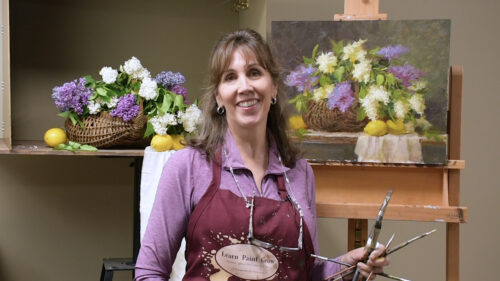
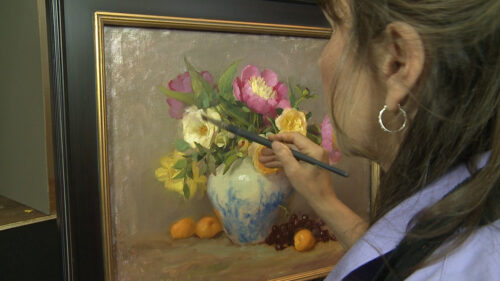
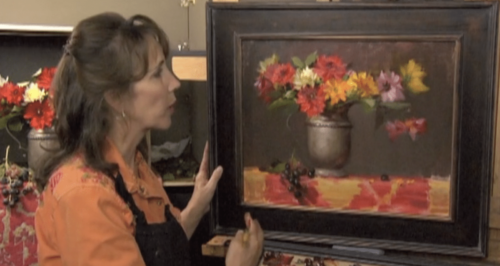

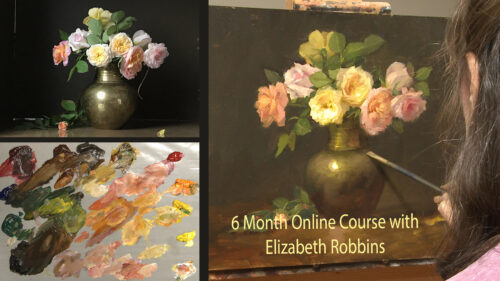




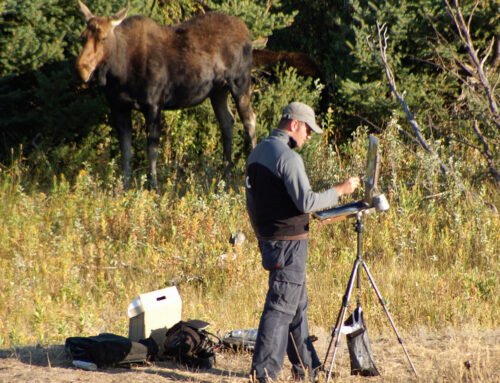
Wonderful WONDERFUL!!!
Wonderful!
Thankyou so much.l can’t tell you how much I enjoy your website
Thank you so much l can’t tell you how much I enjoy your website.
Thank you ! Good teaching.
Thank you ! good teaching,will help greatly.
Thank you for posting such valuable information. I’m going to make a copy of it and keep it with me when I paint. Seeing value and temperature is something I struggle with. So, now I need to go paint and practice what you’ve so clearly outlined!
Elizabeth, your article is written so well and it is all true. I have made a copy to hang in my studio to remind myself of all these elimines of painting . This applies to all paintings not just Still Life’s. On Facebook I saw the portrait you did at workshop, know I want to take portrait workshop with you. You are a great teacher and a wonderful artist and not many artist can do both. I have taken workshops from excellent artists but they can’t teach and come away from the workshop disappointed . Looking forward to seeing you in Florida 2017.
Great article. Love the conciseness of these very important aspects!
Wonderful, answered so meny things I didn’t understand. Thank you!!!!
To add to your excellent painting comments I’d like to offer my most important feature for good paintings:
Namely; composing papa/mama/baby or dark/mid tone/light configurations of different sizes, shapes, and values into a painting and linking each together.
This concept is easily said but it takes years to understand its compositional importance.
Jeannette,
Thank you for your comments. We really do appreciate feed back
Thank you!
Thank you Connie. Stay tuned for more great articles
Andrina,
Thank you so much for your comments. Looking forward to painting with you again
Thank you Beth
Thank you Patricia
Thank you Leary, I often tell the same analogy of the papa bear/baby bear. It helps a lot